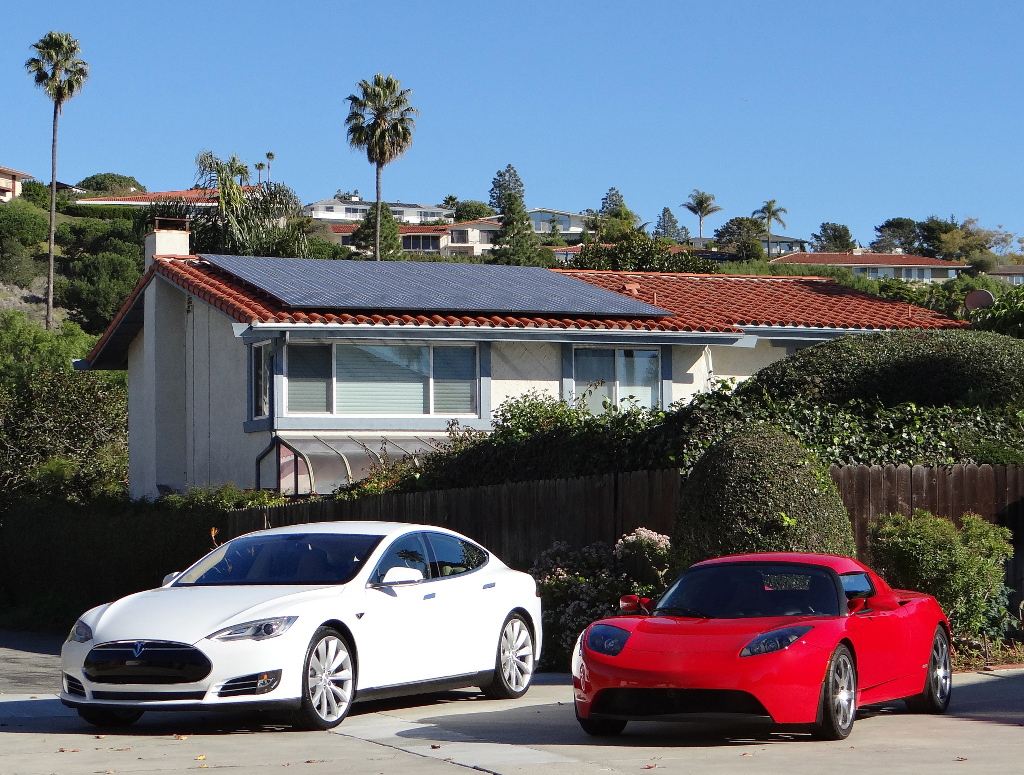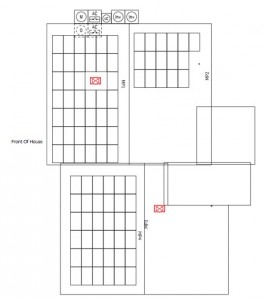News
SolarCity Struggles: National Gridlock (Part III)

In this final post within my SolarCity Struggles series I’ll be outlining the additional complexities that surfaced after our local power company, National Grid, got involved.
National Grid-Lock
 Having already experienced some delays on my solar project due to architectural redesigns, National Grid jumped into the mix to make things even worse by throwing up one road block after another. There was a conflict of interest for National Grid to assist on the project since we would be shifting more than $170,000 of revenue from them to SolarCity. I’d only see a tiny slice of that by way of my energy savings. Despite many city mandates to be “More Green”, the utility companies clearly have no interest in assisting customers to go solar since it would be counter productive for them.
Having already experienced some delays on my solar project due to architectural redesigns, National Grid jumped into the mix to make things even worse by throwing up one road block after another. There was a conflict of interest for National Grid to assist on the project since we would be shifting more than $170,000 of revenue from them to SolarCity. I’d only see a tiny slice of that by way of my energy savings. Despite many city mandates to be “More Green”, the utility companies clearly have no interest in assisting customers to go solar since it would be counter productive for them.
Roadblock #1
National Grid would not allow “net metering” (where you can re-supply energy through solar power) for two different meters at the same address. SolarCity stepped up and offered to join my two meters and upgrade my panel (from 400A to 600A) in order to support net metering. Accounting issues aside, I agreed to the proposed change and moved forward with yet another site visit that would lead to an engineering redesign.
Roadblock #2
Having (verbally) moved past this, National Grid then reported that the transformer for my area was only capable of handling 23kW of generated power and could not support SolarCity’s proposed 56kW system. This was by the most serious setback since it would require a design that would cut my generation down to 23kW or less. This meant dropping the farm completely and scaling the house from 35kW to 23kW.
A 23kW design called for the front of my house to have solar panels while only a portion of the rear of the house would be retrofitted with panels. This would have looked really odd so we decided to scale back the design to a 18kW system and only include panels on the front of the house.
National Grid informed me that the transformers support between 8 – 12 houses in my area so any neighbors that undergo a solar project will be limited to the remaining 5kW that the transformer can support.
Next Steps
Going from a 56kW to 18kW (a 68% drop in planned production) system will reduce my energy coverage to 32% of my power needs through solar. This is unfortunately the case due to National Grid’s limitation despite my property having enough roof surface to generate 100% of my energy needs.
I will save approximately $56,000 over the next 20 years with this smaller set up, a far departure from the original projected savings of $105,000 but still worth pursuing.
A friendly note from SolarCity arrived on September 1st letting me know that my installation was scheduled for December 8th and 9th because of the magnitude of the project. Considering this 18kW system is a third of what would have been, I couldn’t help but wonder how SolarCity would have handled the original plans. I can’t imagine starting this project in the dead of a New England winter. SolarCity indicated that the project would require 4-6 weeks before the “go live” date which meant I wouldn’t be completing until January 2015. That puts the project at about 10 months from start (initial consultation) to finish and assuming all goes well from here on out.
Summary
SolarCity has made a number of mistakes on this project since the beginning; from improperly sizing the system to not knowing the requirements and restrictions of the local power company; to not following owner requests on layout; to not understanding power generation limits imposed by the power company.
My experience with SolarCity has led me to conclude that they’re not ready for widespread adoption outside of key markets and have a lot of work and learning to do before they will be ready for that next stage of growth.
I truly hope the project moves forward. My next updates will be on the post installation experience which will hopefully take place sometime between now and the end of this year. Stay tuned.
SolarCity Struggles Series – Read from the beginning
Image Source: Sun Powered EVs

Elon Musk
Elon Musk’s X will start using a Tesla-like software update strategy
The initiative seems designed to accelerate updates to the social media platform, while maintaining maximum transparency.

Elon Musk’s social media platform X will adopt a Tesla-esque approach to software updates for its algorithm.
The initiative seems designed to accelerate updates to the social media platform, while maintaining maximum transparency.
X’s updates to its updates
As per Musk in a post on X, the social media company will be making a new algorithm to determine what organic and advertising posts are recommended to users. These updates would then be repeated every four weeks.
“We will make the new 𝕏 algorithm, including all code used to determine what organic and advertising posts are recommended to users, open source in 7 days. This will be repeated every 4 weeks, with comprehensive developer notes, to help you understand what changed,” Musk wrote in his post.
The initiative somewhat mirrors Tesla’s over-the-air update model, where vehicle software is regularly refined and pushed to users with detailed release notes. This should allow users to better understand the details of X’s every update and foster a healthy feedback loop for the social media platform.
xAI and X
X, formerly Twitter, has been acquired by Elon Musk’s artificial intelligence startup, xAI last year. Since then, xAI has seen a rapid rise in valuation. Following the company’s the company’s upsized $20 billion Series E funding round, estimates now suggest that xAI is worth tens about $230 to $235 billion. That’s several times larger than Tesla when Elon Musk received his controversial 2018 CEO Performance Award.
As per xAI, the Series E funding round attracted a diverse group of investors, including Valor Equity Partners, Stepstone Group, Fidelity Management & Research Company, Qatar Investment Authority, MGX, and Baron Capital Group, among others. Strategic partners NVIDIA and Cisco Investments also continued support for building the world’s largest GPU clusters.
News
Tesla FSD Supervised wins MotorTrend’s Best Driver Assistance Award
The decision marks a notable reversal for the publication from prior years, with judges citing major real-world improvements that pushed Tesla’s latest FSD software ahead of every competing ADAS system.

Tesla’s Full Self-Driving (Supervised) system has been named the best driver-assistance technology on the market, earning top honors at the 2026 MotorTrend Best Tech Awards.
The decision marks a notable reversal for the publication from prior years, with judges citing major real-world improvements that pushed Tesla’s latest FSD software ahead of every competing ADAS system. And it wasn’t even close.
MotorTrend reverses course
MotorTrend awarded Tesla FSD (Supervised) its 2026 Best Tech Driver Assistance title after extensive testing of the latest v14 software. The publication acknowledged that it had previously criticized earlier versions of FSD for erratic behavior and near-miss incidents, ultimately favoring rivals such as GM’s Super Cruise in earlier evaluations.
According to MotorTrend, the newest iteration of FSD resolved many of those shortcomings. Testers said v14 showed far smoother behavior in complex urban scenarios, including unprotected left turns, traffic circles, emergency vehicles, and dense city streets. While the system still requires constant driver supervision, judges concluded that no other advanced driver-assistance system currently matches its breadth of capability.
Unlike rival systems that rely on combinations of cameras, radar, lidar, and mapped highways, Tesla’s FSD operates using a camera-only approach and is capable of driving on city streets, rural roads, and freeways. MotorTrend stated that pure utility, the ability to handle nearly all road types, ultimately separated FSD from competitors like Ford BlueCruise, GM Super Cruise, and BMW’s Highway Assistant.
High cost and high capability
MotorTrend also addressed FSD’s pricing, which remains significantly higher than rival systems. Tesla currently charges $8,000 for a one-time purchase or $99 per month for a subscription, compared with far lower upfront and subscription costs from other automakers. The publication noted that the premium is justified given FSD’s unmatched scope and continuous software evolution.
Safety remained a central focus of the evaluation. While testers reported collision-free operation over thousands of miles, they noted ongoing concerns around FSD’s configurable driving modes, including options that allow aggressive driving and speeds beyond posted limits. MotorTrend emphasized that, like all Level 2 systems, FSD still depends on a fully attentive human driver at all times.
Despite those caveats, the publication concluded that Tesla’s rapid software progress fundamentally reshaped the competitive landscape. For drivers seeking the most capable hands-on driver-assistance system available today, MotorTrend concluded Tesla FSD (Supervised) now stands alone at the top.
News
Elon Musk’s Grokipedia surges to 5.6M articles, almost 79% of English Wikipedia
The explosive growth marks a major milestone for the AI-powered online encyclopedia, which was launched by Elon Musk’s xAI just months ago.

Elon Musk’s Grokipedia has grown to an impressive 5,615,201 articles as of today, closing in on 79% of the English Wikipedia’s current total of 7,119,376 articles.
The explosive growth marks a major milestone for the AI-powered online encyclopedia, which was launched by Elon Musk’s xAI just months ago. Needless to say, it would only be a matter of time before Grokipedia exceeds English Wikipedia in sheer volume.
Grokipedia’s rapid growth
xAI’s vision for Grokipedia emphasizes neutrality, while Grok’s reasoning capabilities allow for fast drafting and fact-checking. When Elon Musk announced the initiative in late September 2025, he noted that Grokipedia would be an improvement to Wikipedia because it would be designed to avoid bias.
At the time, Musk noted that Grokipedia “is a necessary step towards the xAI goal of understanding the Universe.”
Grokipedia was launched in late October, and while xAI was careful to list it only as Version 0.1 at the time, the online encyclopedia immediately earned praise. Wikipedia co-founder Larry Sanger highlighted the project’s innovative approach, noting how it leverages AI to fill knowledge gaps and enable rapid updates. Netizens also observed how Grokipedia tends to present articles in a more objective manner compared to Wikipedia, which is edited by humans.
Elon Musk’s ambitious plans
With 5,615,201 total articles, Grokipedia has now grown to almost 79% of English Wikipedia’s article base. This is incredibly quick, though Grokipedia remains text-only for now. xAI, for its part, has now updated the online encyclopedia’s iteration to v0.2.
Elon Musk has shared bold ideas for Grokipedia, including sending a record of the entire knowledge base to space as part of xAI’s mission to preserve and expand human understanding. At some point, Musk stated that Grokipedia will be renamed to Encyclopedia Galactica, and it will be sent to the cosmos.
“When Grokipedia is good enough (long way to go), we will change the name to Encyclopedia Galactica. It will be an open source distillation of all knowledge, including audio, images and video. Join xAI to help build the sci-fi version of the Library of Alexandria!” Musk wrote, adding in a later post that “Copies will be etched in stone and sent to the Moon, Mars and beyond. This time, it will not be lost.”









